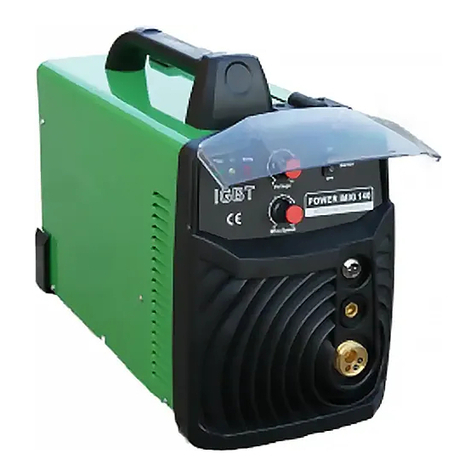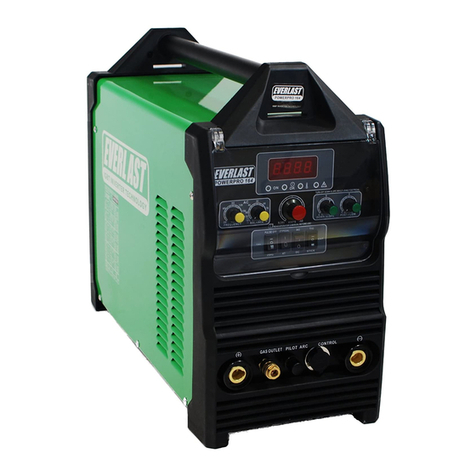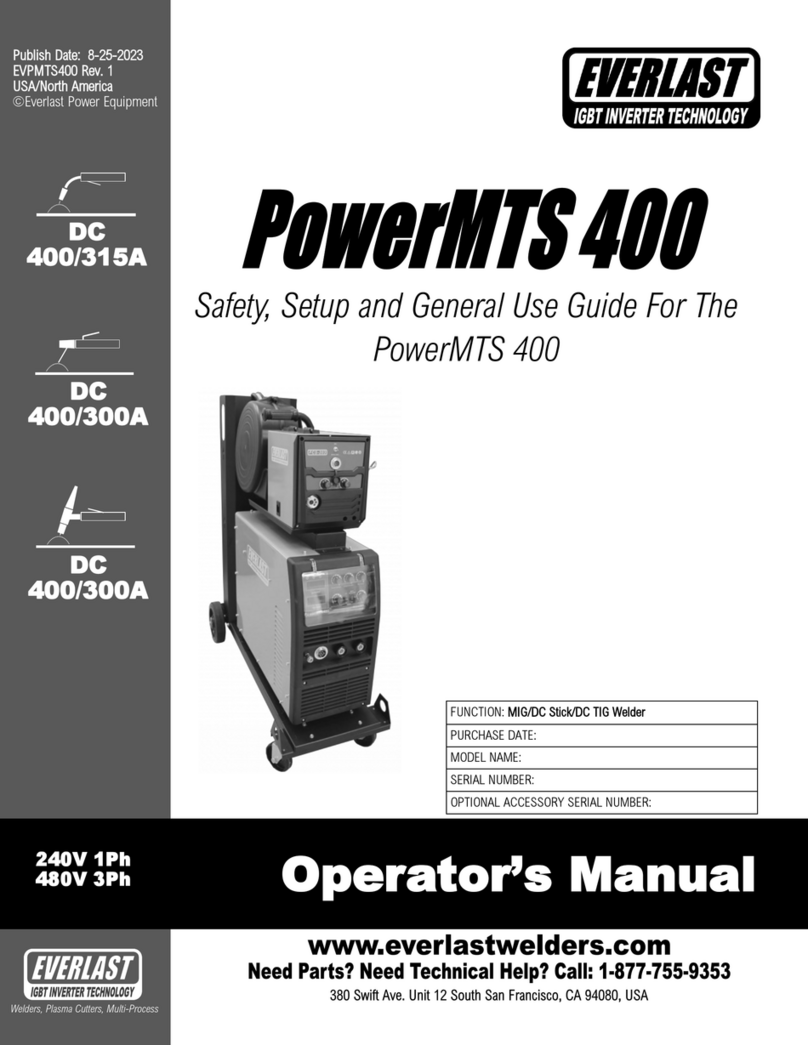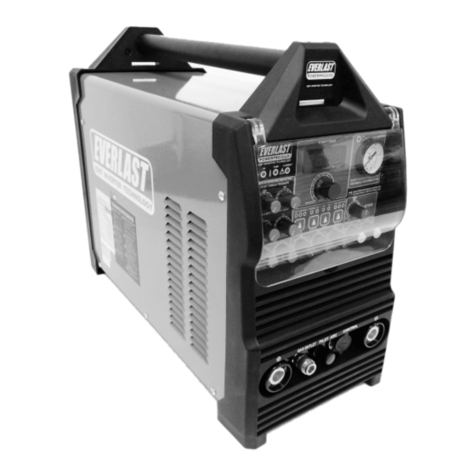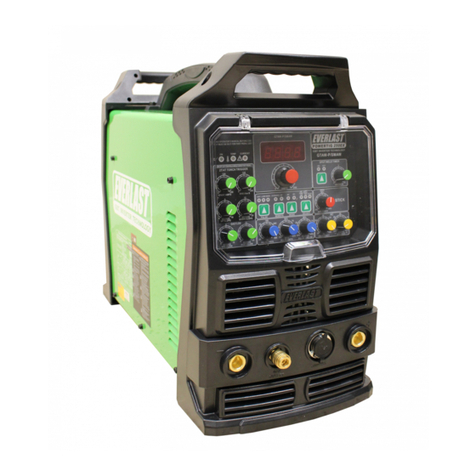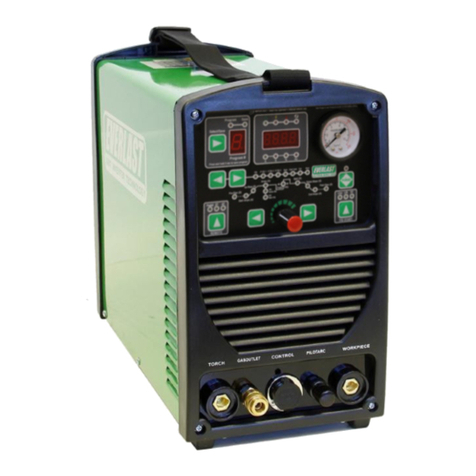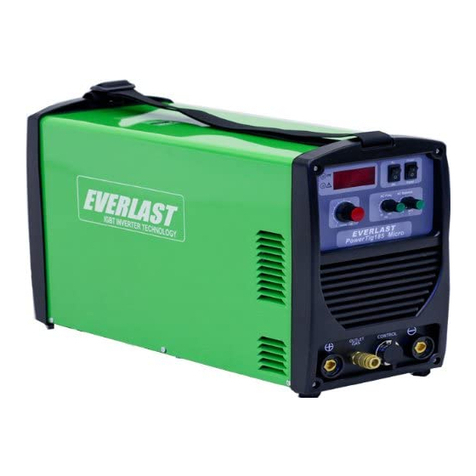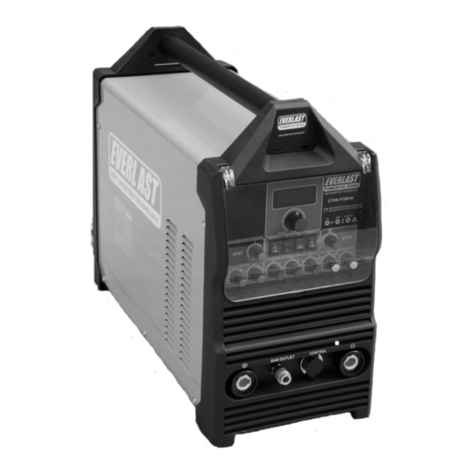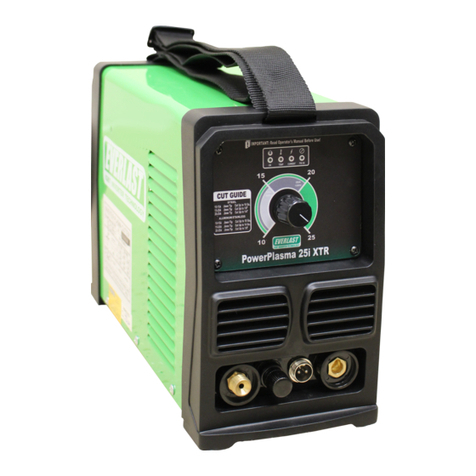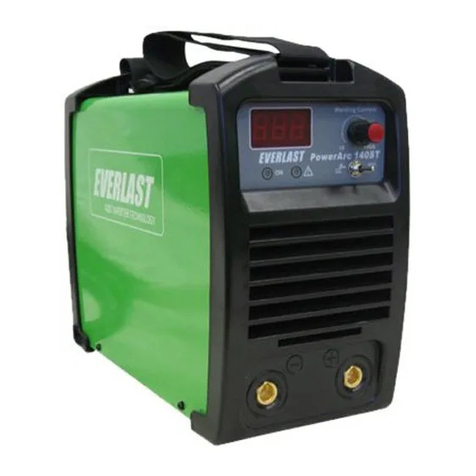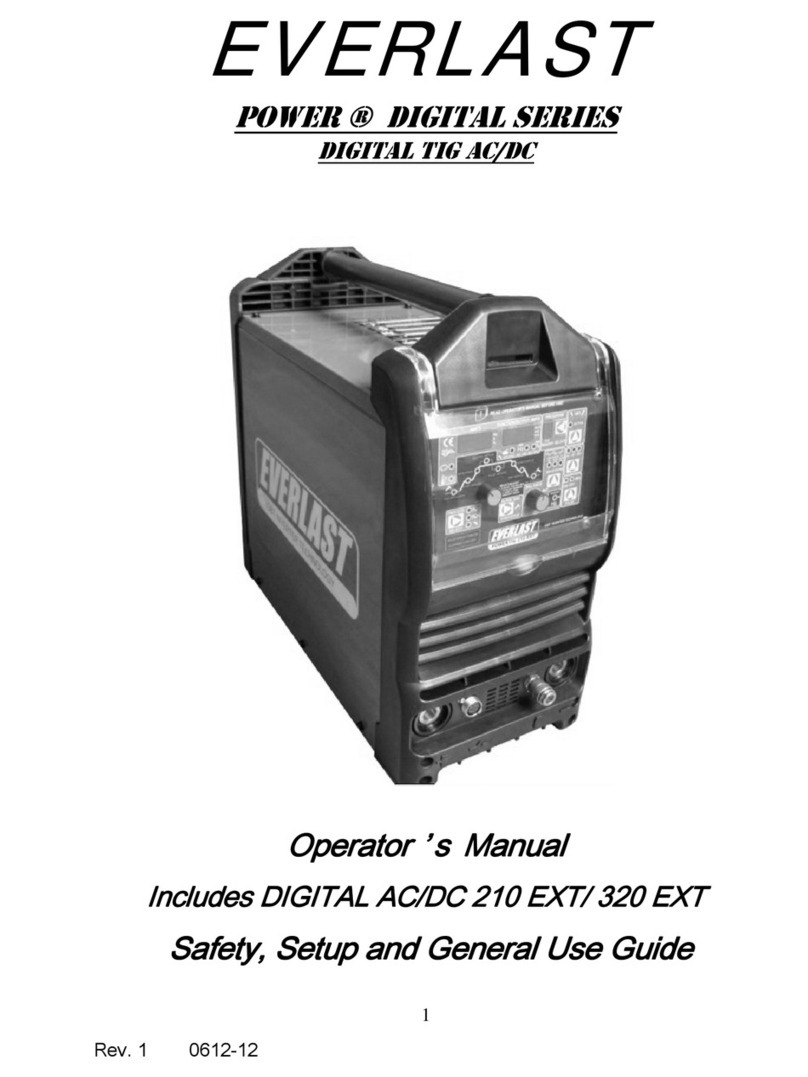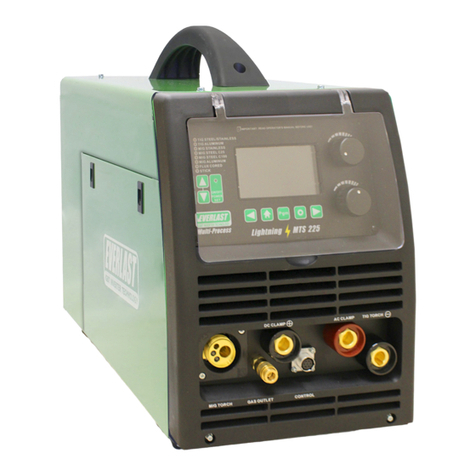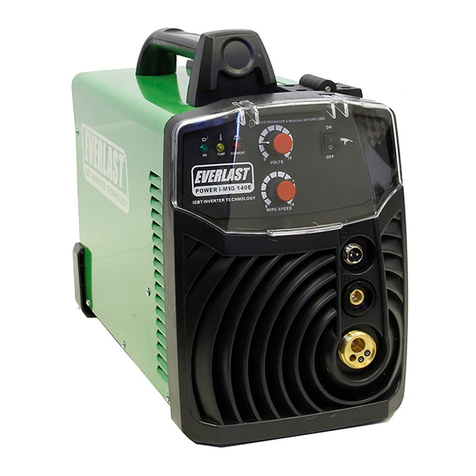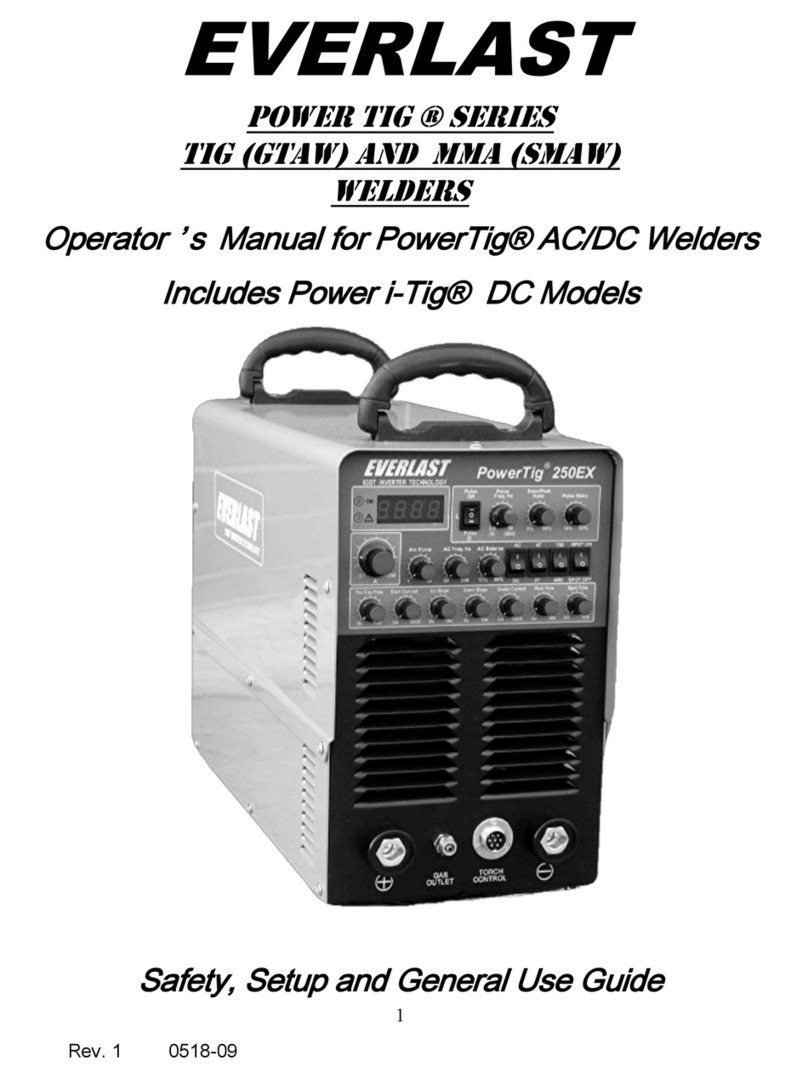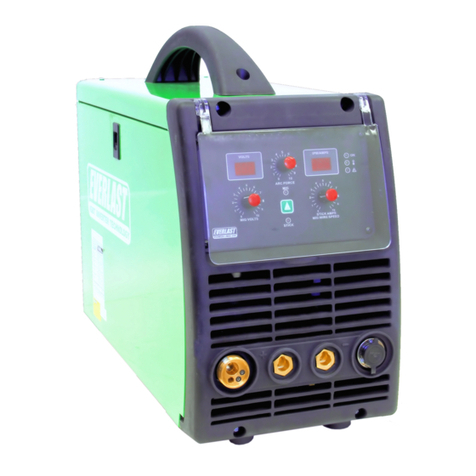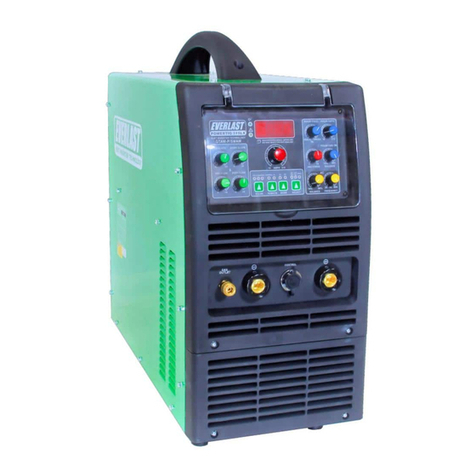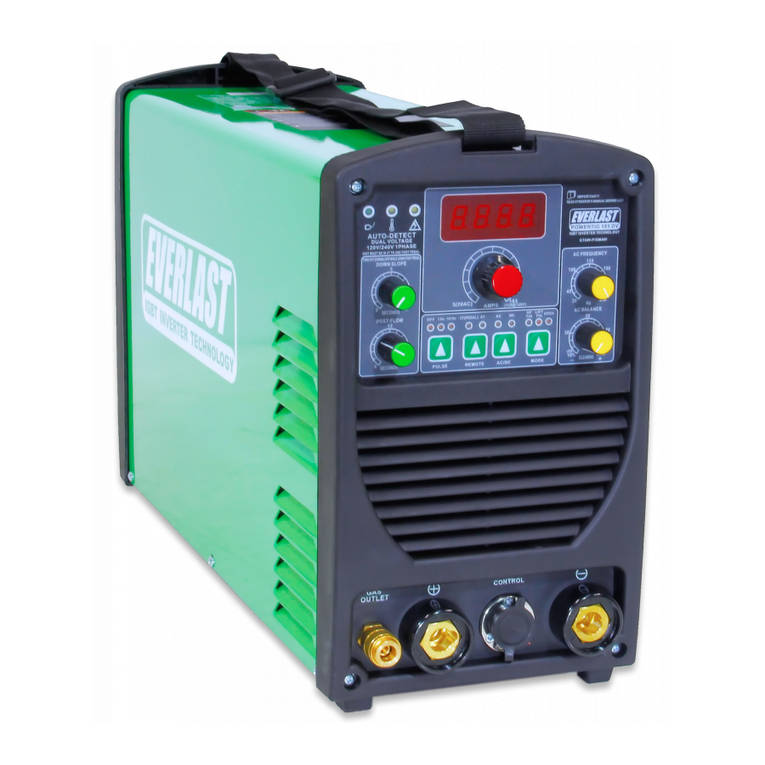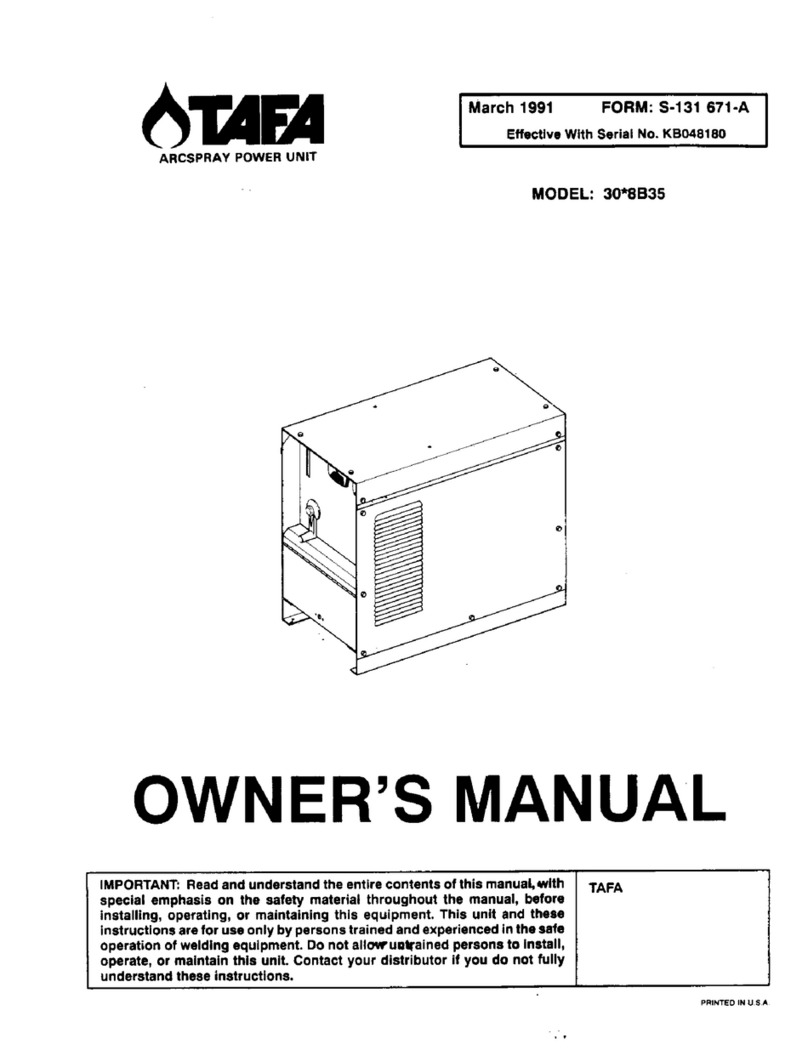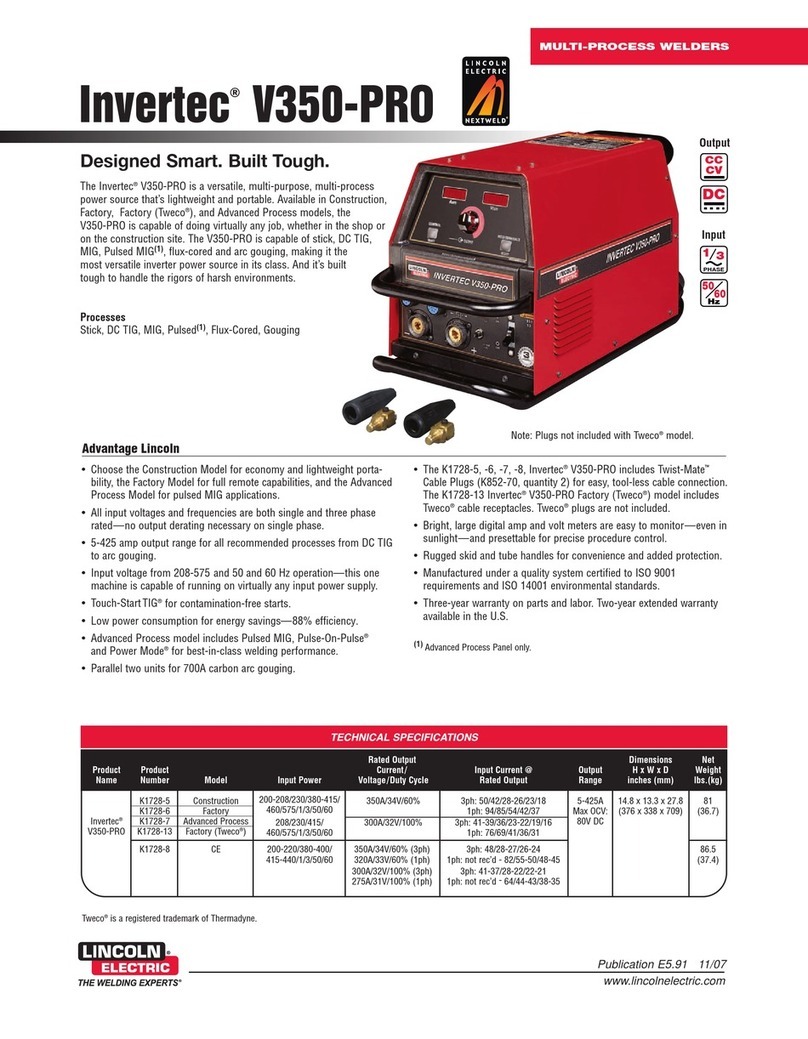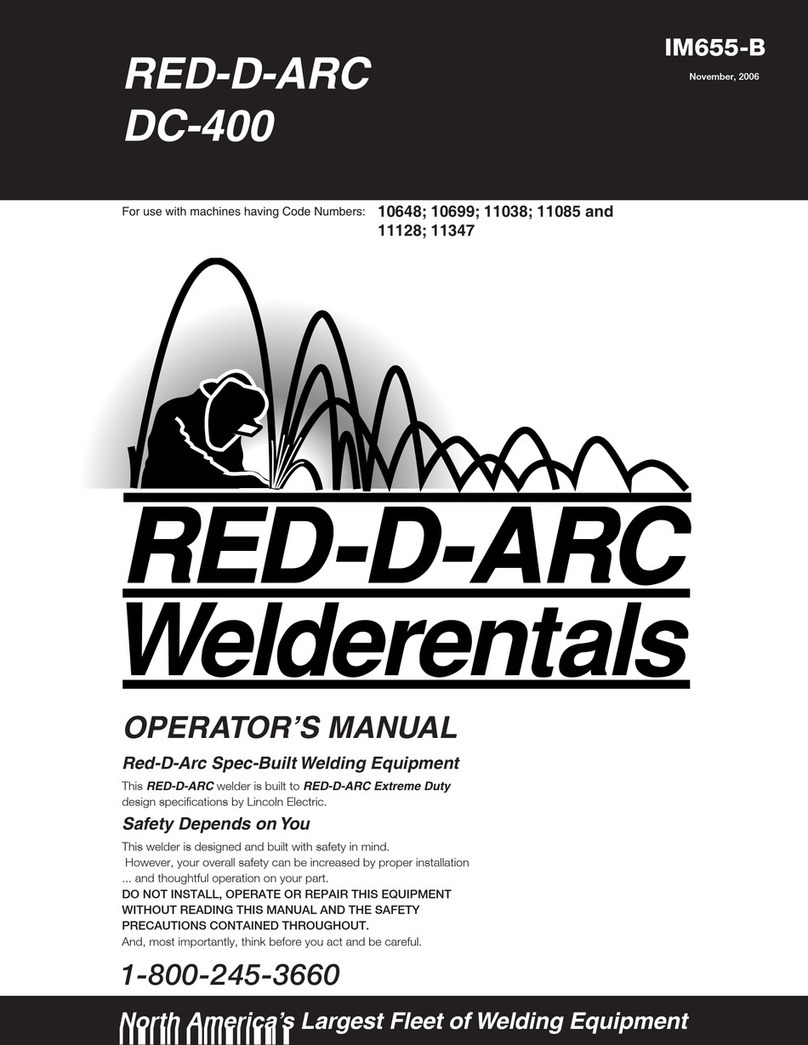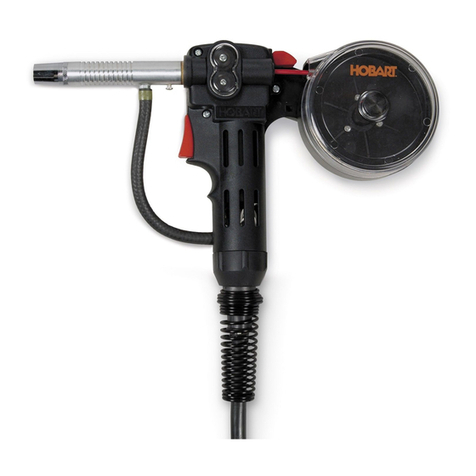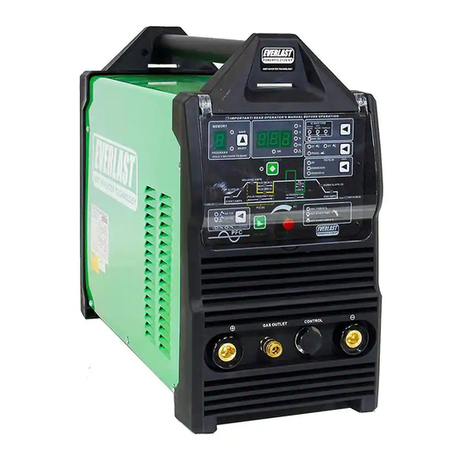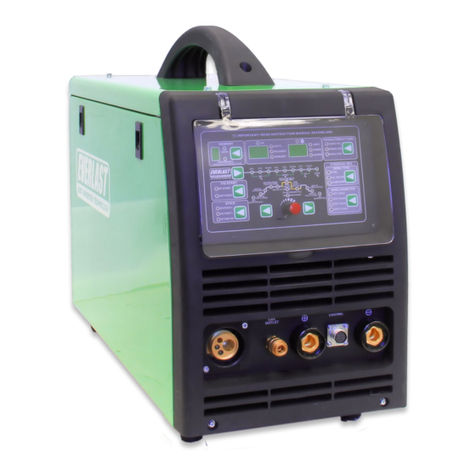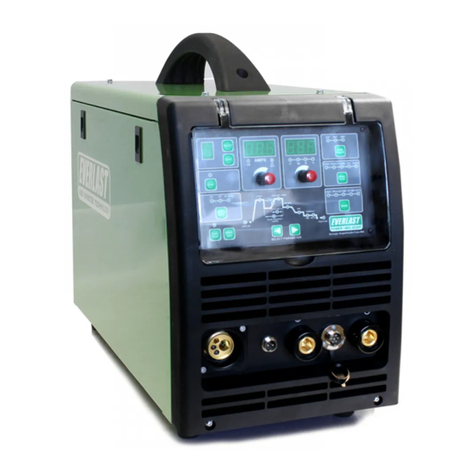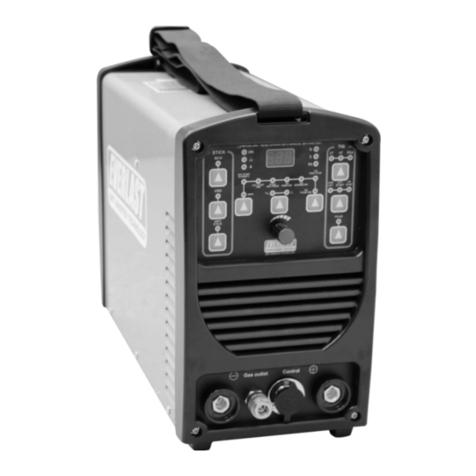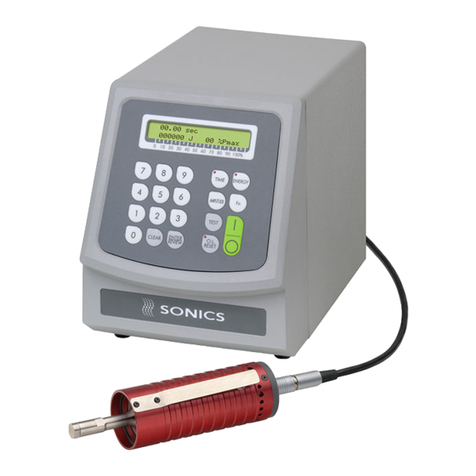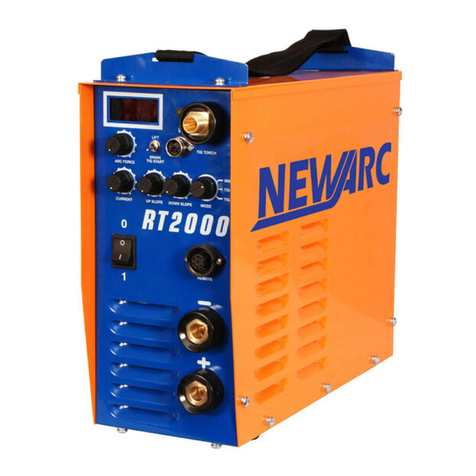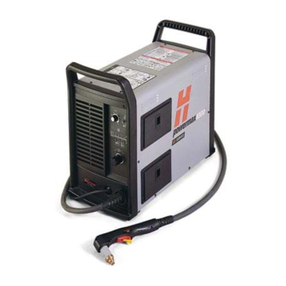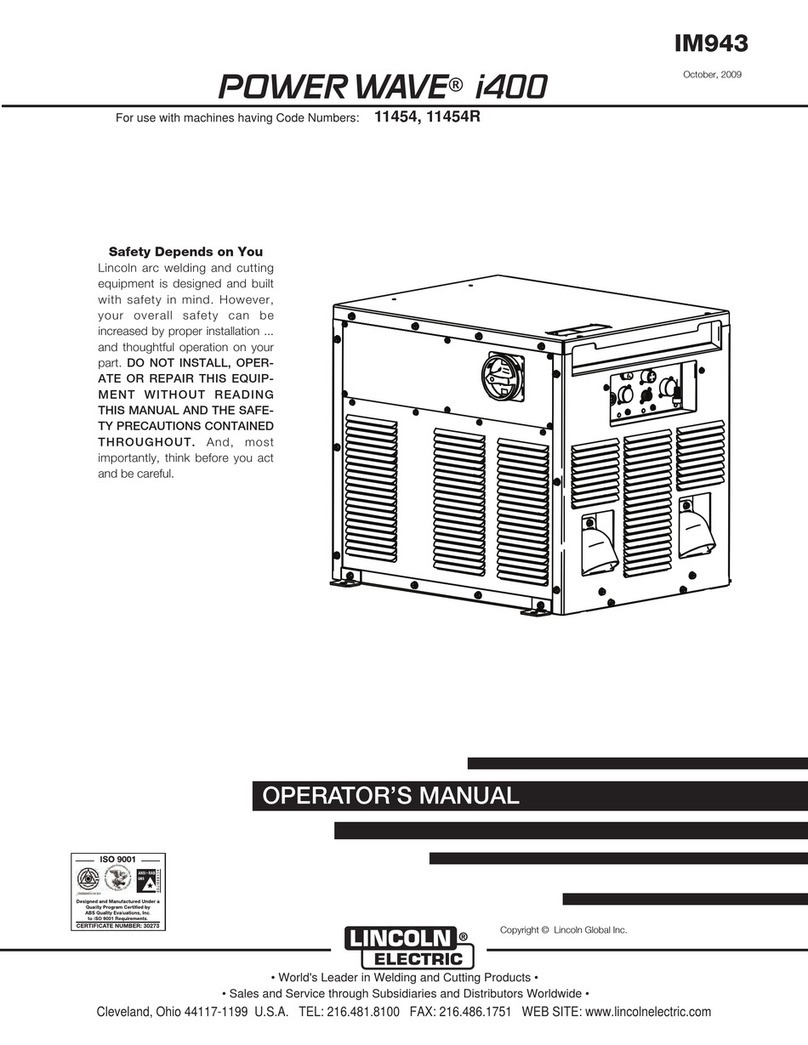5
Safety Precautions
Everlast is committed to providing you with the best possible equipment and service to meet the demanding
job requirements that you may have. We want to go beyond delivering a satisfactory product to you. That is
the reason we offer free technical and basic welding support to assist you with your needs, should an occa-
sion occur where it is needed. With proper use and care your product should deliver years of trouble free
service. Everlast products are designed and intended for use by professionals and knowledgeable individu-
als, who have a basic skill set and an elementary knowledge of basic welding and safe welding practices.
Untrained users can create unsafe conditions that not only endanger lives, but that also endanger property
and the equipment. Keep a printed copy of this manual available and easily accessible for all users and do
not let a user operate this equipment without fully reading and studying this manual.
Safe operation and proper maintenance is your responsibility.
We have compiled this operator’s manual, to instruct you in basic safety, operation and maintenance of
your Everlast product to give you the best possible operator/owner experience. Welding and related cut-
ting operations require basic experience and common sense. Exercise extreme caution and care in all ac-
tivities related to welding or cutting. Your safety, health and even life depends upon it.
While accidents are never planned, preventing an accident requires careful planning. Stay alert!
Please carefully read this manual before you operate your Everlast unit. This manual, if read in full, can as-
sist the user in obtaining helpful information concerning the safe operation of this unit. Do not operate the
unit until you have read this manual and you are thoroughly familiar with the safe operation of the unit. If
you feel you need more information please contact Everlast Support. The content of this manual is not meant
to be an exhaustive primer on welding. It is written to an audience that, if not professional, will have at least
a basic skill set in welding which includes basic knowledge of welding terms and best practices.
The 5 year warranty does not cover improper use, maintenance, accessories or consumables. Accessories
are covered by a separate warranty (length varies), which is also listed on our website along with the full
terms of the welder warranty. Consumables have no warranty.
Do not attempt to alter or defeat any piece or part of your unit, particularly any safety device. Keep all
shields and covers in place during unit operation should an unlikely failure of internal components result in
the possible presence of sparks and explosions. If a failure occurs, discontinue further use until malfunc-
tioning parts or accessories have been repaired or replaced by qualied personnel.
Note on High Frequency electromagnetic disturbances:
Certain welding and cutting processes generate High Frequency (HF) waves. These waves may dis-
turb sensitive electronic equipment such as televisions, radios, computers, cell phones, and related equip-
ment. High Frequency may also interfere with fluorescent lights. Consult with a licensed electrician if dis-
turbance is noted. Sometimes, improper wire routing or poor shielding may be the cause.
WARNING! HF can interfere with pacemakers. See EMF warnings in following safety section for fur-
ther information. Always consult your physician before entering an area known to have welding or
cutting equipment if you have a pacemaker.
